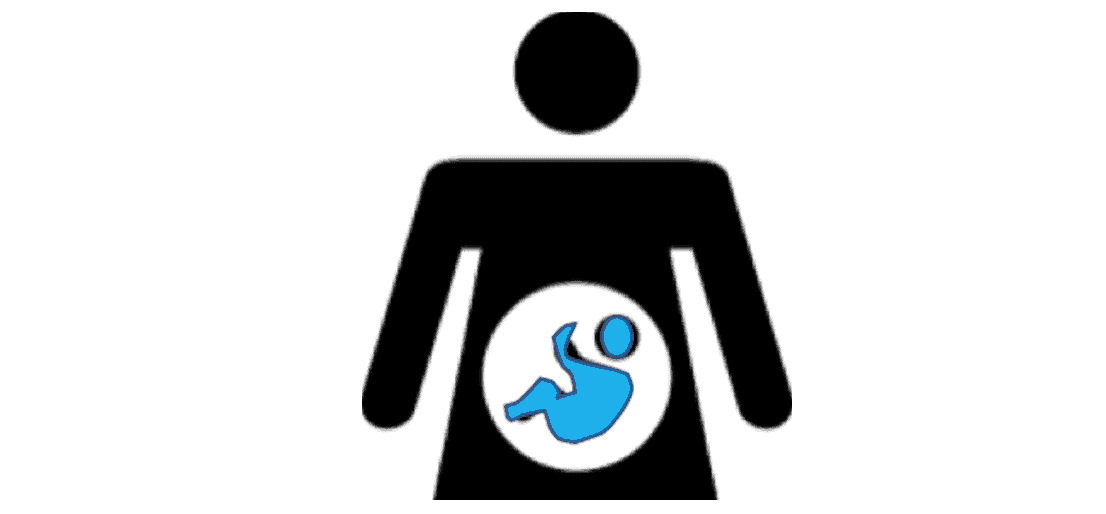Is cardioversion safe in the pregnant patient?
A CASE
A 24 yo female patient presents with palpitations and some dizziness. She is G1P0 and is 28 weeks gestation. Her rhythm strip is shown below. You make the diagnosis of SVT. You try the ‘REVERT‘ approach and other vagal techniques, with no success. What medications are safe in pregnancy?
You try Adenosine, with no response. What can you try now? Can you cardiovert this pregnant patient?

Cardiac arrhythmias occur in 1.2 per 1000 pregnant patients, the most common being AV re-entry tachycardias, atrial tachycardia and atrial fibrillation(1). In non-obstetric patients where, pharmacological therapy doesn’t work, or the patient becomes haemodynamically unstable, electricity is the treatment of choice. It works. Let’s look at the medications we can use and if cardioversion in pregnancy is safe.
What pharmacological therapy is safe in pregnancy?
The are no Class A anti-arrhythmics in pregnancy.
Beta Blockers and Calcium Channel Blockers
Beta blockers such as Sotalol are Class B ie., no evidence of risk to humans and although a chance of fetal harm exists, it is remote. Other beta blockers such as Metoprolol and Propranolol are Class C drugs, as are Calcium channel Blockers, ie., risk can’t be ruled out and fetal risk is likely.
Calcium channel blockers can cross the placenta and may be associated with teratogenic effects, and although they have been used for the treatment of preeclampsia, there have been reports, of associated with fetal heart block (2)
Other Pharmacological Therapy
Adenosine is also a Class C drug, but seems to have no adverse events in the second and third trimester and very little evidence of any in the first.
**********Amiodarone is a Class D and is associated with adverse events**********
**********Atenolol is also a Class D and is associated with intrauterine growth defects.**********
How to approach the pregnant patient with an SVT ?
The same as any other patient. Start with vagal maneuvers and progress to adenosine.
How about Atrial Fibrillation in pregnancy?
In Atrial fibrillation we can use Magnesium or Sotalol– NOT Amiodarone.
What happens if the drugs fail and the patient is decompensating?
How safe is cardioversion?
Tromp et al (3) addressed this question by looking at the literature from 1965 onwards. The energy used, ranged from 50 to 400 Joules. 44 cases were looked at and the success rate in pregnant patients was 93.2%.
There were two maternal deaths reported following cardioversion, but it was felt that these were attributable to the severity of their underlying disease, not the cardioversion.(4)(5)
In terms of fetal outcome, there is not much in the literature. There were two cases reported where fetal distress followed cardioversion and caesarean section had to be performed. In one case (6), there was significant uterine contraction thought to be responsible for a significant fetal bradycardia. This resolved after delivery.
The uterus is usually not involved in the current trajectory, and so cardioversion should only minimally affects the uterus, but it is, along with amniotic fluid, a good conductor. It appears unlikely that cardioversion has a direct effect on the fetal heart rate due to the high fibrillation threshold of the fetal heart (7). However indirect effects such as uterine contraction, can affect the fetus.
I would recommend that we do everything before we try defibrillation. Vagal manoeuvres, add the diving reflex, give a bolus of fluid to distend the atrium. Us the medications that cause minimal harm.
If cardioversion is the only option, then take care when applying pads, so that they are minimally over the enlarged uterus. This can be difficult to do, in late pregnancy. You should have fetal monitoring in place and the capacity to undertake an emergency C section, before cardioversion.
Scared now? This should be one of those cases where cardiology is involved early.
References
(1) Oktay C, Kesapli M, Altekin E. Wide-QRS complex tachycardia during pregnancy: treatment with cardioversion and review. Am J Emerg Med. 2002 Sep; 20(5):492-3.
(2) Kleinman CS, Copel JA, Weinstein EM, Santulli TV, Hobbins JC. Treatment of fetal supraventricular tachyarrhythmias. J Clin Ultrasound 1985; 13: 265-273.
(3) Tromp C.H.N et al. Electrical cardioversion during pregnancy: safe or not? Neth Heart J. 2011 March; 19(3): 134–136.
(4) Klepper I Cardioversion in late pregnancy. The anaesthetic management of a case of Wolff-Parkinson-White syndrome. Anaesthesia. 1981 Jun; 36(6):611-6.
(5) Meitus ML Fetal electrocardiography and cardioversion with direct current countershock. Report of a case. Dis Chest. 1965 Sep; 48(3):324-5.
(6) Barnes EJ, Eben F, Patterson D. Direct current cardioversion during pregnancy should be performed with facilities available for fetal monitoring and emergency caesarean section. BJOG. 2002;109:1406–1407.
(7) Wang YC, Chen CH, Su HY, et al. The impact of maternal cardioversion on fetal haemodynamics. Eur J Obstet Gynecol Reprod Biol. 2006;126:268–269.










